The science of preserving nature since 1964
Look out for these pests and diseases on your landscape...
Unfortunately, the invasive pests outlined here remain in the forefront and are developing concerns. Please call your local Almstead branch branch right away to schedule an appointment if you see any of them on your property.
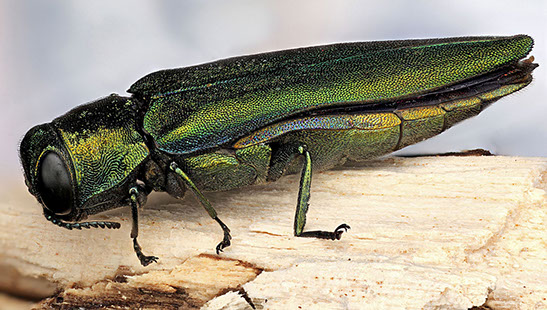
Emerald Ash Borer (EAB)
EAB is a tiny, half-inch long, invasive insect that infests and kills native North American ash species, including green, white, black and blue ash. It is a metallic green insect that feeds on the layer of the tree just under the bark and prevents the movement of life-sustaining sugar, water and nutrients through the tree. We have had great success in treating for and preserving ash trees against this pest. Please contact your Almstead arborist if you are unsure or if you have a desirable ash tree worthy of protection!
Spotted Lanternfly (SLF)
Spotted Lanternfly typically infests plants in very large numbers and sucks the sap from stems and leaves. This results in weakening the plant or tree and making it susceptible to other pests and diseases. The insect is a significant threat to a wide range of agricultural crops including walnut, grapes, hops, apples, and blueberries. The Tree of Heaven (Ailanthus altissima) is its preferred host tree and is required for its reproduction, however it will and can feed on most of our native trees creating a mess from the sap fermenting into a sooty mold. The spotted lanternfly adult is approximately 1" long and 1/2" wide at rest. The forewing is grey with black spots and the wings tips are reticulated black blocks outlined in grey. The hind wings have contrasting patches of red and black with a white band. The legs and head are black; the abdomen is yellow with broad black bands. Immature stages are black with white spots, and develop red patches as they grow.
Federal officials and agriculture departments from states up and down the Northeast have asked the public to squash these insects, their nymphs and eggs on sight. Almstead offers specialized treatments for the control of SLF. Please contact your local branch office.
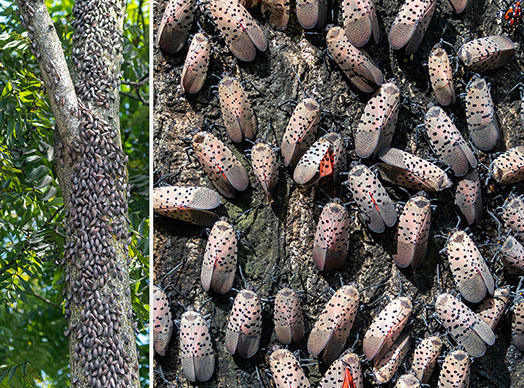
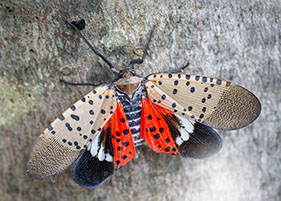



Bacterial Leaf Scorch (BLS)
Bacterial Leaf Scorch is caused by the bacterium Xylella fastidiosa, and it infects several species of deciduous trees. American Elm and several species of Oak (bur, laurel, pin, chestnut, black, red, scarlet, shingle, live, white, willow and several others) and maple (red, sugar, boxelder) are known hosts. Additional trees that have been reported to be susceptible include mulberry, hackberry, sweetgum, flowering dogwood, and sycamore. The first noticeable symptom is premature browning of leaves in mid-summer. Symptoms worsen throughout late summer and fall. Leaf margins turn brown, beginning with the older leaves and moving outward, spreading to leaves toward the branch tip. In most, but not all infected trees, browned, dead areas of the leaf are separated from green tissue by a narrow yellow border. The browned leaves may drop from the tree. Infected trees leaf-out normally the following year, with leaves on a few more branches turning prematurely brown in late summer. Symptoms become progressively worse over a period of 3 to 8 years, until the entire tree turns brown prematurely. The lack of green, chlorophyll producing leaves year after year leads to twig, branch, and limb death due to continual defoliation.
No treatments are currently available to prevent trees from becoming infected with BLS. Diseased trees with advanced decline should be removed to reduce the likelihood of spreading the pathogen to healthy trees. Systemic insecticides, such as Arbor-OTC that we use on trees on Governors Island, can be applied to the soil or injected into the stem to provide suppression of the insect vectors. Speak to your arborist about options if you notice BLS in your trees.
Asian Longhorned Beetle (ALB)
ALB, is an invasive wood-boring insect that feeds on a variety of hardwoods including maple, birch, elm, ash, poplar, horsechestnut, and willow, among others. The beetles are approximately 1.5 inches long and shiny black, with white spots on their wing cases. They have black and white antennae that can be up to twice as long as their body. Fortunately, there are no new outbreaks in our region and quarantine on transporting wood has been lifted.



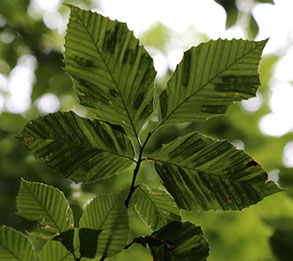
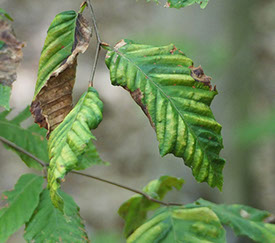
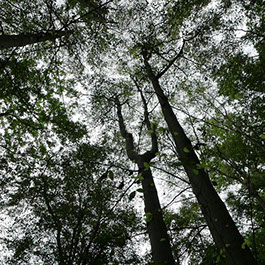
Research is still developing for potential controls and a cure. There are experimental program regiments that are geared to promote health and vigor in these trees while research continues. Please contact your Almstead arborist to discuss these options if you have beech trees on your property.
Beech Leaf Disease (BLD)
Beech Leaf Disease is a new and devastating disease suspected to be caused by a nematode, or microscopic worm. It causes the infected portions of the leaves to shrivel up and die, leading to a decreased ability to photosynthesize, deteriorating overall health and vigor and eventually exposing the tree to secondary insect pests and disease. All cultivars of American, European as well as Oriental beech are susceptible. The most characteristic symptom of BLD is a dark green coloration in bands between leaf veins. With time, these leaves become deformed, chlorotic, and develop a thickened, almost leathery texture.
The leaves eventually wither, dry and turn yellow before falling off making the canopy of the tree thin and open — and susceptible to opportunistic insects such as borer and fungal cankers. The tree depletes its reserves of sugars and all beech can decline and die within 2-6 years.
Dutch Elm Disease (DED)
In Dutch Elm Disease infected trees, the vascular system becomes clogged with a fungus, restricting the movement of water. Although American elm species are highly susceptible to this disease, European species also succumb. Fortunately, several resistant American elm and hybrid elm selections are available or being developed. We can also preserve and protect elms from DED by macro-injection with a fungicide on a two year cycle.
Recently, Almstead has been working with New York City Parks & Recreation utilizing a product known as Dutch Trig on an annual basis that builds resistance in healthy elms. The advantage of this treatment is the speed of application, reduced cost and less wound impact caused by drilling.

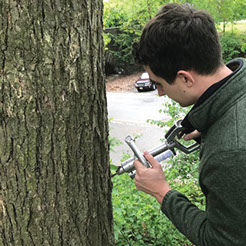


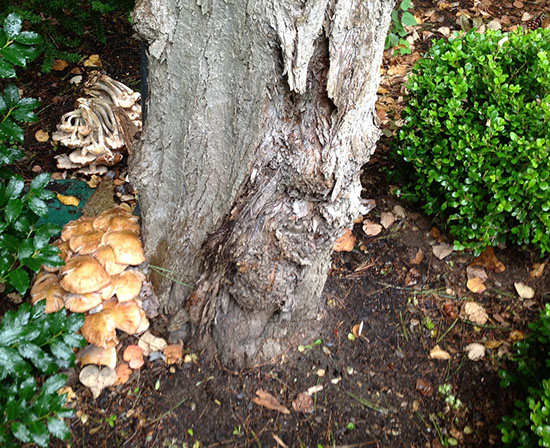
Conks/Fruiting Bodies: Armillaria Root Rot
This is another fungal-caused disease which affects both hardwoods and softwoods. Armillaria is a primary cause of the decline of oak species. The fungus weakens the tree, making it susceptible to attack by insects or other diseases. Conks can be both annual and perennial. If you observe a mushroom conk on or around the base of our tree you should contact your Almstead arborist as soon as possible.
Boxwood Blight
Boxwood Blight is a fungal disease that affects plants in the boxwood family. Symptoms first appear on the leaves as tan or brown spots with a dark edge and often with a yellow halo. The pathogen causes rapid defoliation of leaves and dieback of stems leading to the death of young plants. Defoliation of larger plants makes them susceptible to infection by other pathogens which can lead to plant death.
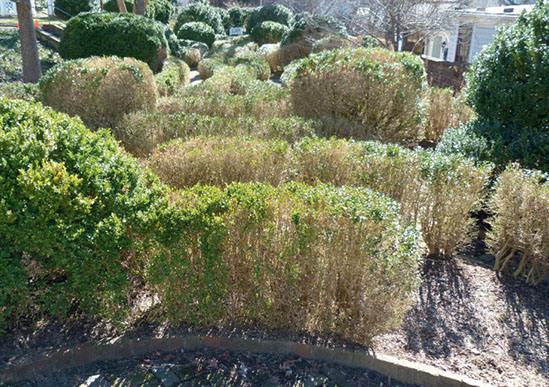
Common Tree Pests in our Area
Anthracnose (Leaf Blight)
Leaves of hardwoods that exhibit dark blotches or dead patches can be indicators of Leaf Blight, or Anthracnose disease. Anthracnose infection is due to a fungus which infiltrates the tree, causing the leaves to die. At first the tree is able to fight the disease, but as more leaves die the tree weakens and eventually succumbs to the illness. Black walnut, white oak, dogwood and sycamore trees are most often infected by Anthracnose. We can treat for this disease preventatively in two ways based upon the species and size, via a series of foliar applications and/or injection.

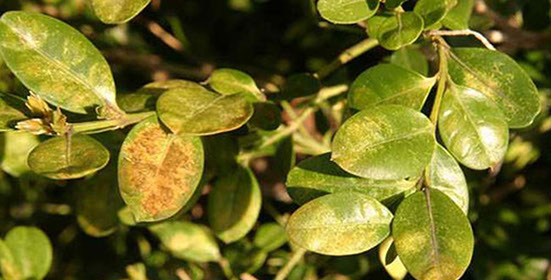
Boxwood Leafminer
Boxwood Leafminer is a very destructive insect pest of boxwood. The larvae of this fly feed on the tissue between the outer surfaces of the leaves. This feeding results in blotch-shaped mines in the boxwood leaves. The infested leaves appear blistered from late summer through the following spring.
Box Tree Moth
Box Tree Moth is another invasive pest that can significantly damage and potentially kill boxwood plants if left unchecked. The insect is native to East Asia and has become a serious invasive pest in in our region. The caterpillars feed mostly on boxwood and heavy infestations can defoliate host plants. Once the leaves are gone, larvae consume the bark, leading to girdling and plant death. Box Tree Moth larvae are easily recognizable; they are green and yellow with white, yellow, and black stripes and black spots (see image on right). Signs of damage may not appear at the beginning of an infestation because young larvae hide among twigs and leaves. Signs of a Box Tree Moth feeding on a plant include chewed, cut, or missing leaves, yellowing or brown leaves, white webbing, and green-black excrement on or around the plant. Larvae skeletonize the leaves and feed on the bark, causing defoliation and dryness, eventually leading to the plant’s death.
If you find any signs of infestation, call your Almstead arborist or report it to your local USDA office or state department of agriculture.
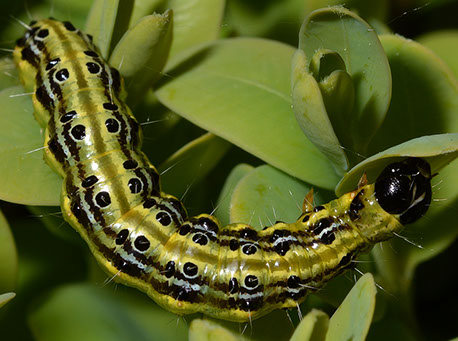
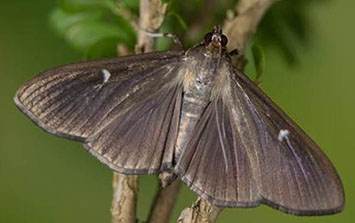
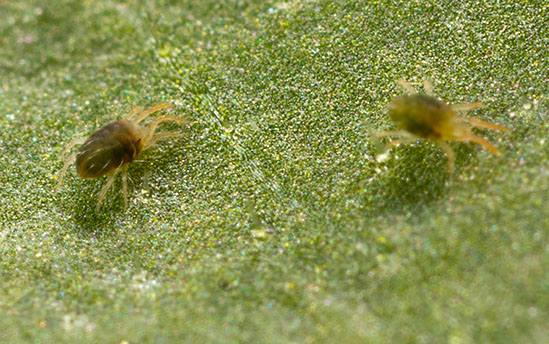
Tree Mites
Several kinds of mites can cause damage to your trees, but the most common one is the spider mite. They are insects that produce protective silk webs similar to spiders that can be found on deciduous trees, evergreens, and other plants. The mites themselves are nearly microscopic in size, but their webs and the leaf damage they leave behind are easily observed.
White Prunicola Scale
White Prunicola Scale is an armored scale insect that infects members of the Prunus species, and various other ornamental plants. They are insects that feed on the plant sap and they are a very common problem on cherry laurels. It is one of the most significant pests of cherry and peach trees. The insect is native to Asia but it has also become established in the United States.
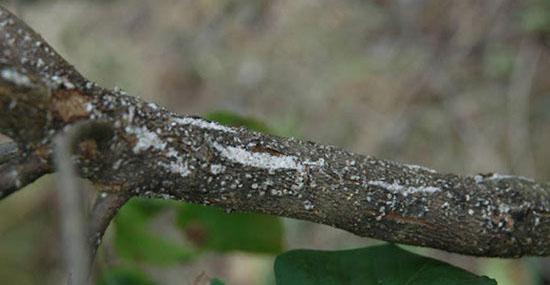
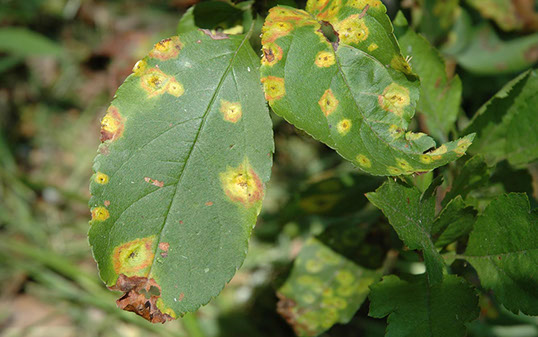
Cedar Apple Rust
Cedar Apple Rust is a group of fungi that contains many species that usually require two or more hosts to complete the life cycle. Members of this family are known as rusts because the color of many is orange or reddish at some point in the life cycle. A heavily infested apple or hawthorn can take on a yellowish cast from the numerous lesions on the leaves.
Aphids
They are generally found on the underside of the leaf and their damage produce a gradual change in the color of the foliage. An infestation of aphids will show symptoms of Chlorosis: insufficient chlorophyll that is responsible for the color of leaves. Sticky residue near the infestation is most likely the excrement from the insect, also known as honeydew.
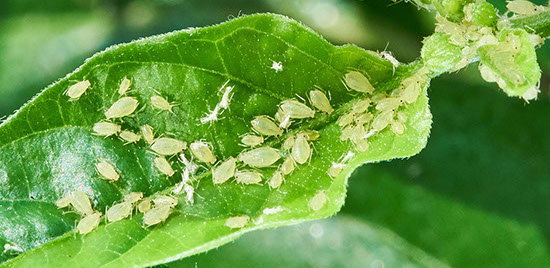
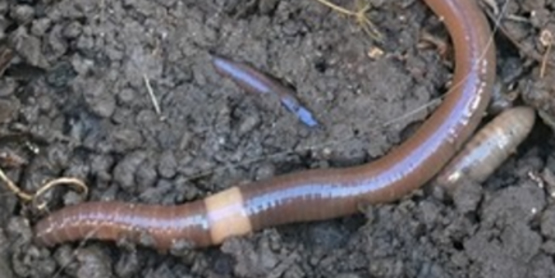

Jumping Worms
Jumping worms get their name from the erratic, jumping behavior they exhibit when disturbed. These invasive pests ravage the soil and damage plant life. They consume the critical layer of organic matter that supplies vital nutrients for plants and provides food, protection and habitat for wildlife.
Jumping worms primarily stay in the top layer of soil, leaching nutrients and turning topsoil into a texture similar to coffee grounds. This makes it difficult for many plants to grow, including garden plants, trees, and lawns.
To prevent their spread, do not buy or use jumping worms for bait, composting, or gardening and be careful when sharing and moving plants.
Lace Bugs
Lace Bugs feed on the undersides of leaves of deciduous trees and shrubs. Their feeding can discolor leaves (creating small, white or yellow mottled spots on the upper leaf surface) but does not normally affect the health of woody plants. Heavy feeding can cause severe leaf discoloration and premature leaf drop.
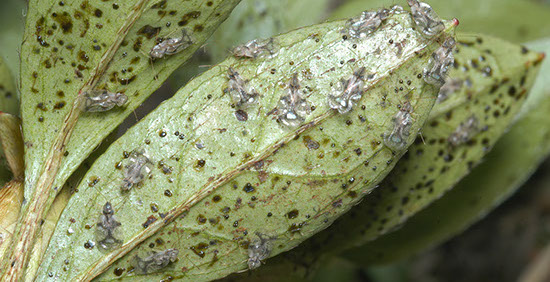

LOCATIONS:
Lower Westchester County, NY and New York City
58 Beechwood Ave, New Rochelle, NY 10801
914-576-0193
Upper Westchester (North of I-287)
15 Broadway, Hawthorne, NY 10532
914-741-1510
Fairfield County, Connecticut
547 Hope Street, Stamford CT 06907
203-348-4111
Bergen & Passaic Counties, NJ
504 High Mountain Road, North Haledon, NJ 07508
973-636-6711
Contact us for a Free Consultation
